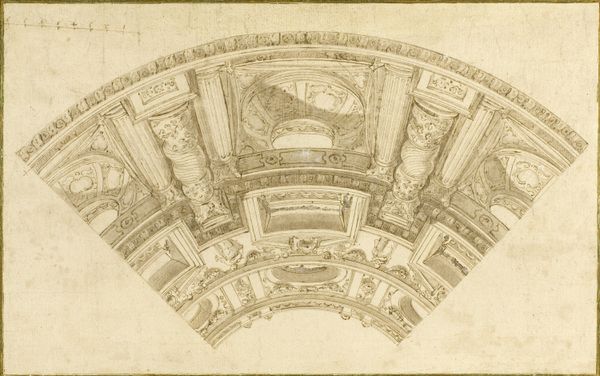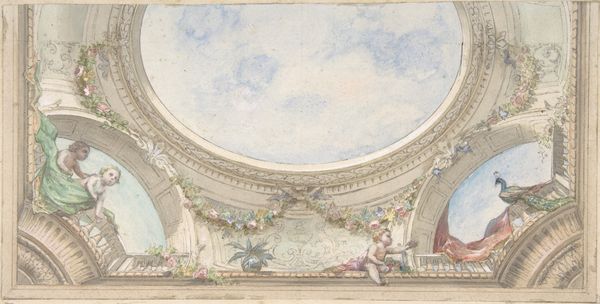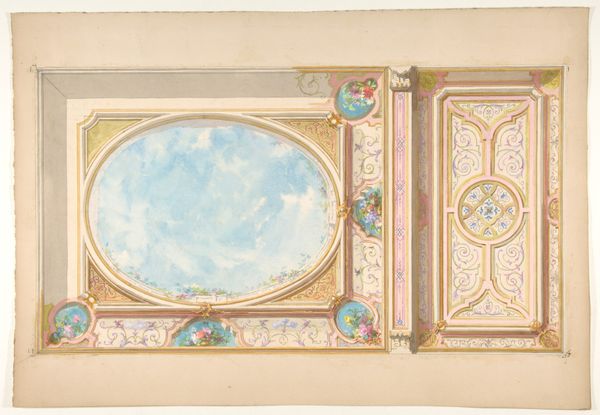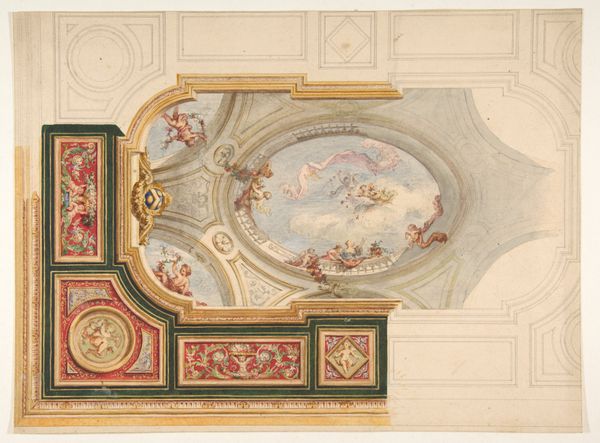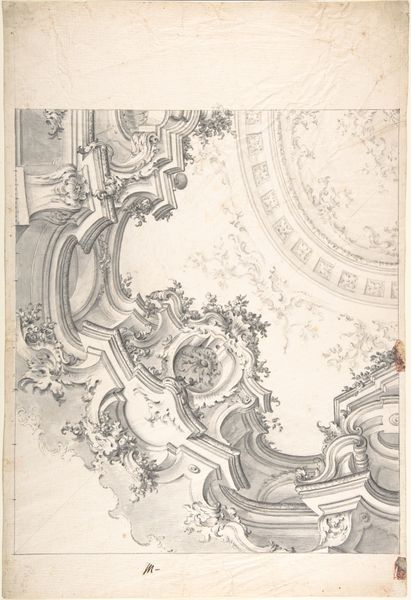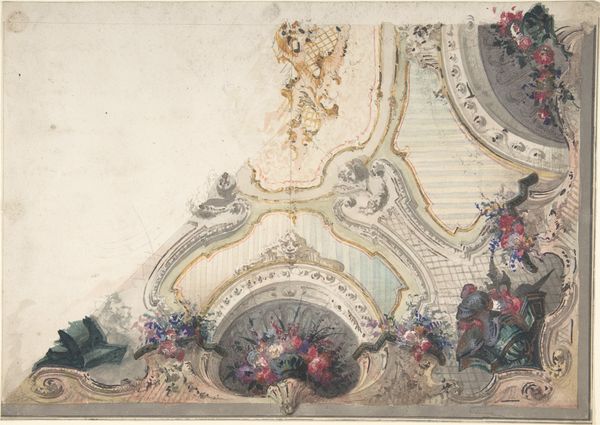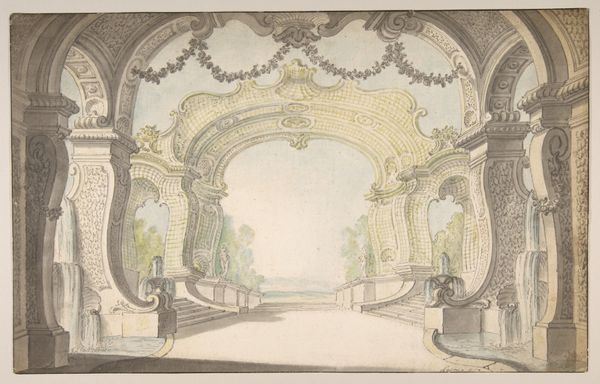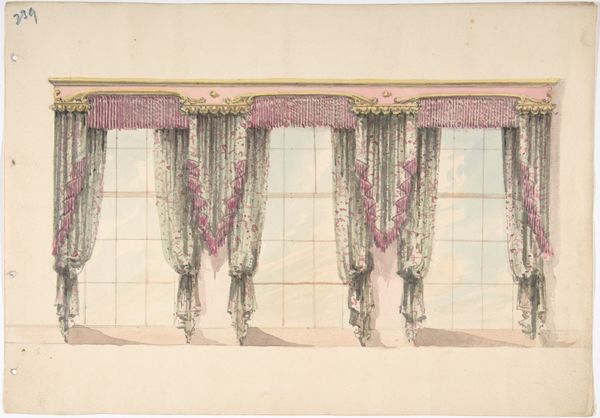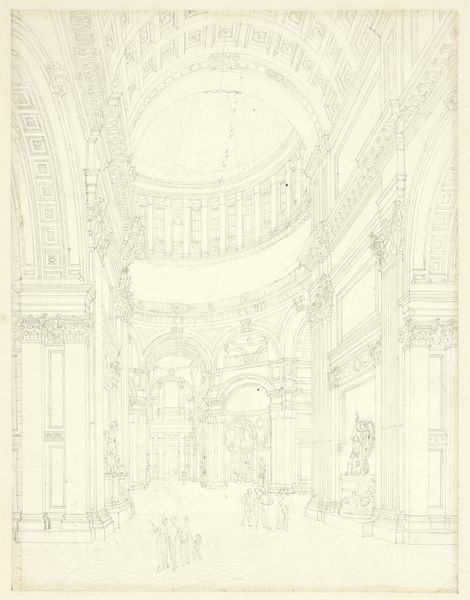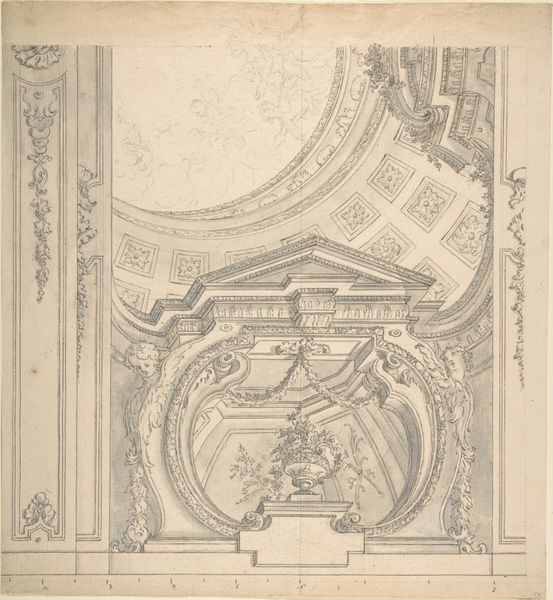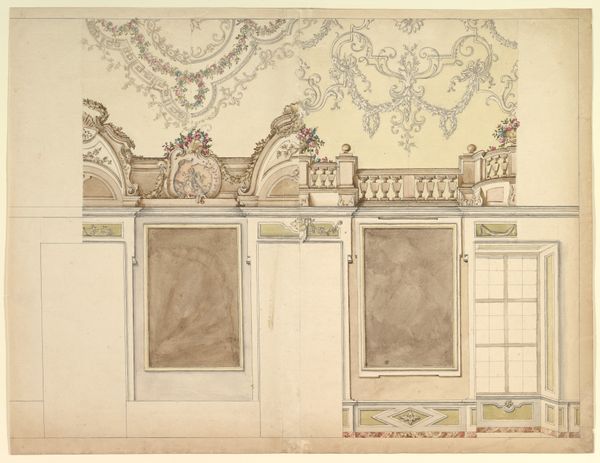
Design for a Cupola Decoration 1716 - 1781
0:00
0:00
drawing, print, architecture
#
drawing
#
baroque
# print
#
landscape
#
decorative-art
#
watercolor
#
architecture
#
rococo
Dimensions: Overall: 11 3/4 x 17 3/8 in. (29.8 x 44.1 cm)
Copyright: Public Domain
Editor: Here we have Giovanni Antonio Torricelli's "Design for a Cupola Decoration," likely created sometime between 1716 and 1781. It appears to be a watercolor drawing, and the composition, looking upward towards a decorative dome, is rather striking. How do you interpret this work in its historical context? Curator: This drawing gives us insight into the opulent tastes of the 18th century elite, doesn't it? Architectural designs like this were crucial in shaping the public image of power. Consider the role of decorative arts. This isn't merely about aesthetic pleasure; it’s a deliberate statement about wealth, authority, and the client’s cultural aspirations. Where might this design have been displayed? Editor: Probably in a palace or some other kind of very grand building to showcase wealth? Curator: Precisely. Patrons used artwork as symbolic language. Notice the rococo flourishes and the landscape elements merged into the architecture. It’s not just about pretty flowers; it speaks to the patron's supposed harmonious relationship with the natural world. What does this level of detail and ornament say about artistic patronage and the socio-political context in the period? Editor: It suggests art was integral to constructing and maintaining power, demonstrating the patron's sophistication and control. And perhaps the museum space itself, in choosing to display this drawing, is part of that continued projection of authority? Curator: An astute observation! The museum’s selection and presentation certainly add another layer to its socio-political significance. It prompts questions about who gets to define 'art' and whose stories are prioritized. It forces us to confront the legacies of power that persist even today. Editor: This really sheds light on how design served political and social functions in the past and continues to shape our perceptions today. I see architecture so differently now.
Comments
No comments
Be the first to comment and join the conversation on the ultimate creative platform.
